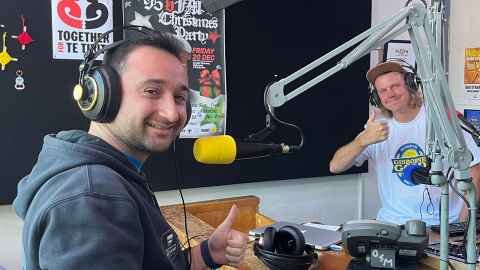Saving lives using digital twins of sick lungs
16 January 2025
A pioneering project is creating digital clones of the lungs, offering a glimpse into how patients might respond to surgery for a hard-to-treat condition.

Research to create individualised computer-based clones of the lungs could be a game-changer for patients with chronic thromboembolic pulmonary hypertension (CTEPH) – one of the trickiest lung conditions for surgeons to diagnose and treat.
CTEPH is caused by blood clots in the lungs turning to scarring and causing obstruction of the arteries to the lung. It can be fatal if not treated. The trouble for doctors (and their patients) is that many of the symptoms are similar to those of people with other conditions - heart disease for example – making it difficult to diagnose.
And even with an accurate diagnosis, it’s not always clear to specialists which patients will respond well to the massive open-sternum surgery required to treat the condition, and which won’t.
The complexity of the eight-hour operation means undergoing the trauma of the surgery without the benefits of the freed-up arteries can actually kill the person.
Researchers at the Auckland Bioengineering Institute (ABI), part of the University of Auckland, Waipapa Taumata Rau, are building computer models of the lungs, known as digital twins.
Using patient data taken before surgery (scans, heart rate, lung function, blood and other tests, and physiological information), the ABI Lung and Respiratory System team are working to individualise the computer models to predict how the blood flow and pressure in someone’s lungs might change after surgery, says Behdad Shaarbaf Ebrahimi, one of the main researchers on the project.
Imagine knowing how your body might respond before even stepping into the operating room.
“Think of it as a way to look into the future and help doctors figure out the best treatment plan," Ebrahimi says. "This work could be a game-changer because it lets us personalise care and better understand who will benefit most from surgery.
“Imagine knowing how your body might respond before even stepping into the operating room.”
The latest stage of the project involves working with surgeons in New Zealand, Melbourne and Sheffield to input past patient histories and actual outcomes into the ABI model to see whether the digital twin would have come up with the right answer, and hone the accuracy of the computer system.
The goal is to get individualised lung models able to be used in-clinic as part of the suite of diagnostic and surgical tools doctors can use, Ebrahimi says.
“This technology is going to be out there in the future – and the power of AI means things are going very fast. I'm hoping at some point this will be integrated inside hospitals and it will help with decision making for the surgeons.
"Already they do many tests to be able to understand what is going on with an individual. This will be another tool to help them make the best decisions.”
While Ebrahimi and his team are working on the lungs, other Auckland Bioengineering Institute research teams are developing digital twin technology for other parts of the body, including the heart, breasts, gastrointestinal tract and joints. The ultimate goal is to create a full digital human able to be personalised for an individual patient.
As Ebrahimi told Jonny Vahry, host of the Ready Steady Learn research segment on radio station 95bFM: “Digital twins will be a very important part of clinical decision making in the future.”

Media contact
Nikki Mandow | Research communications
M: 021 174 3142
E: nikki.mandow@auckland.ac.nz